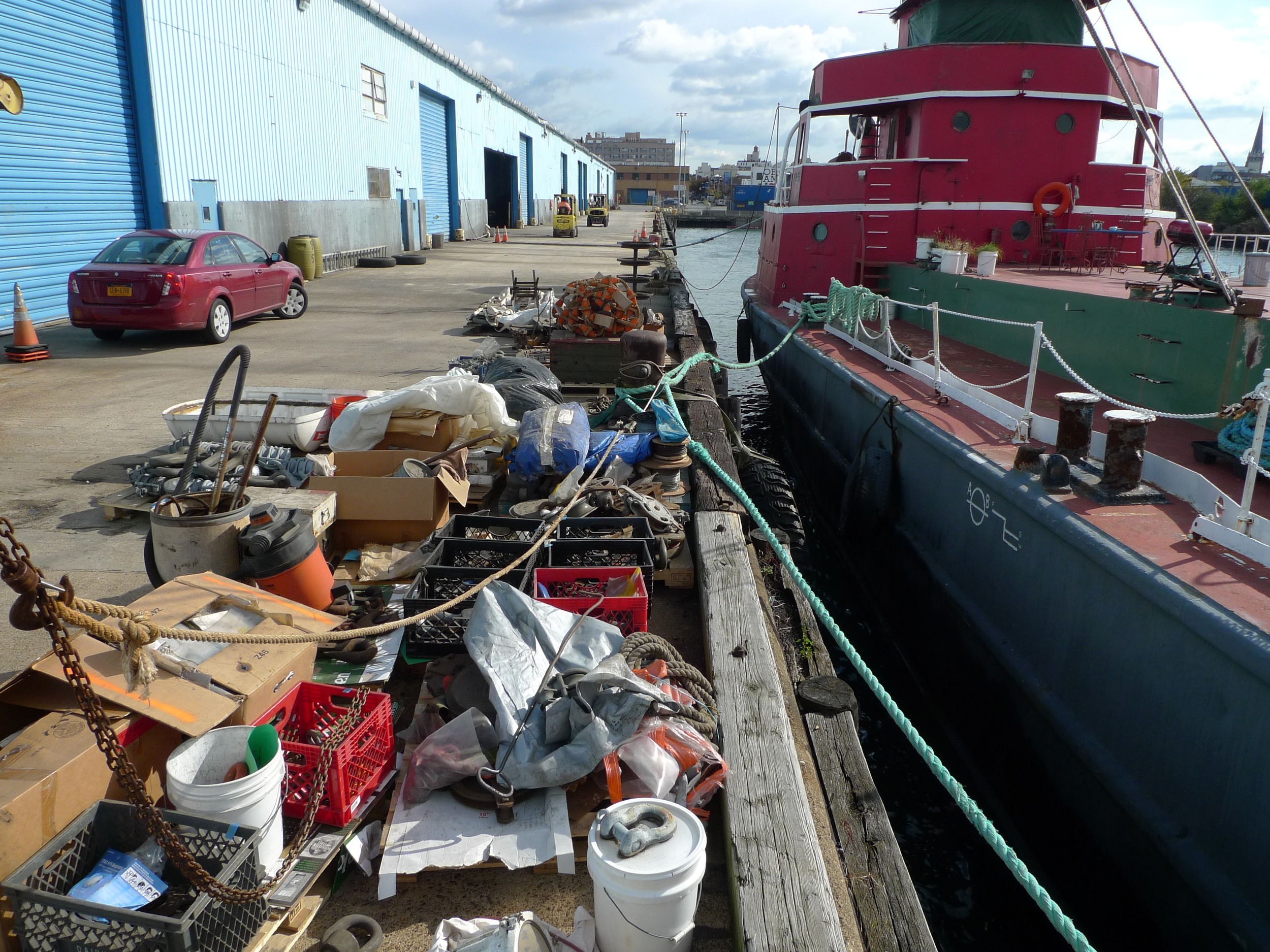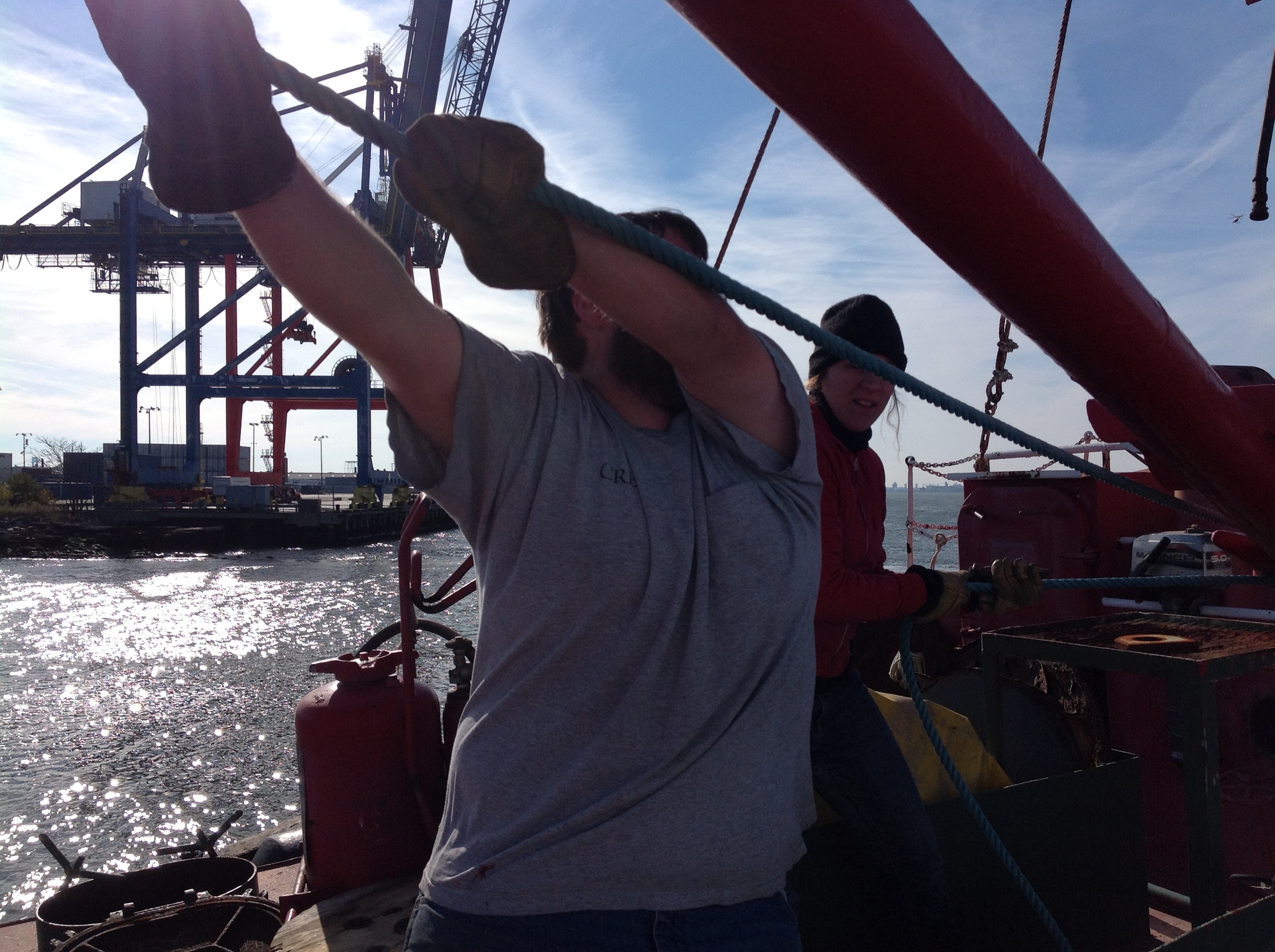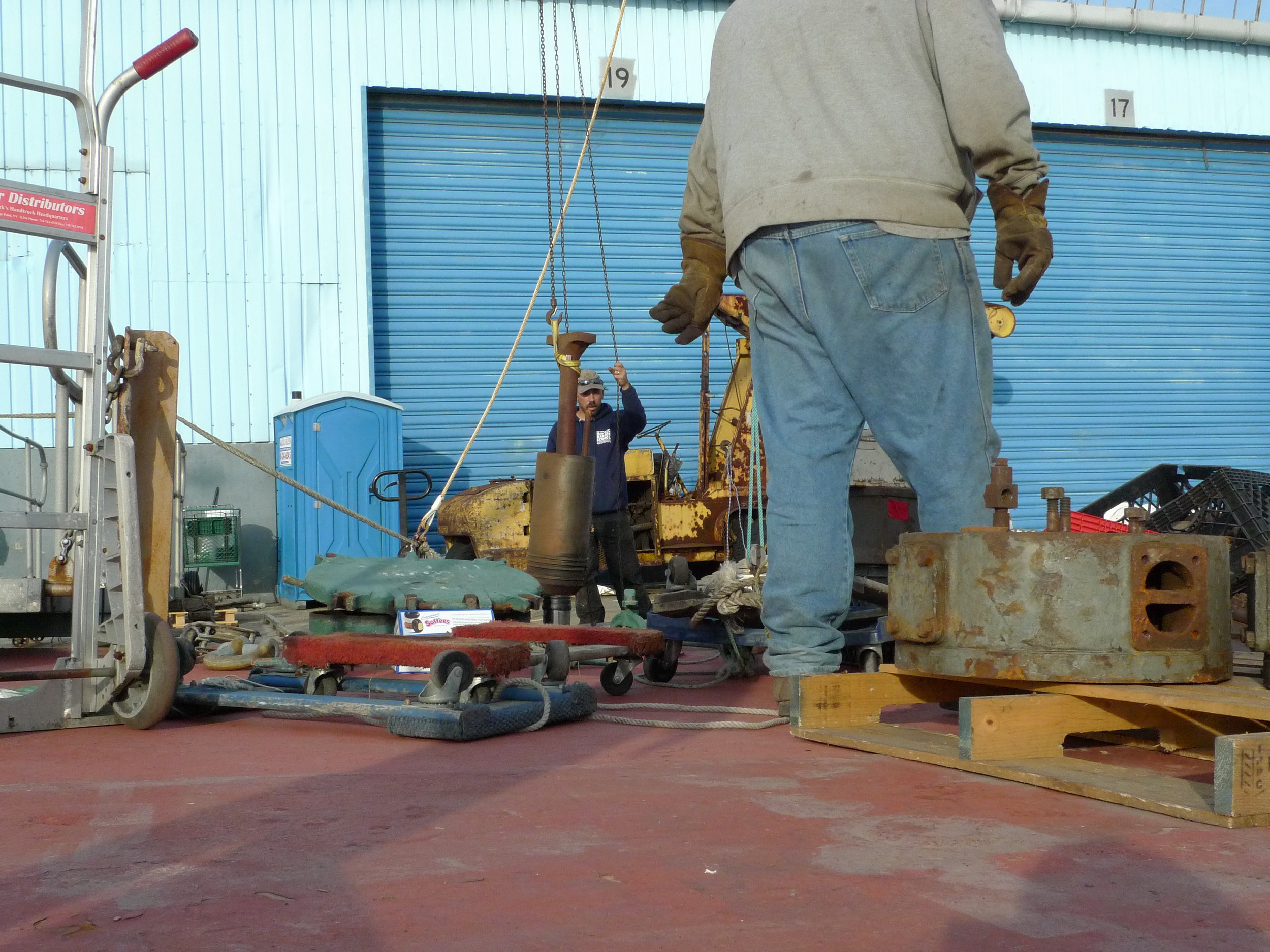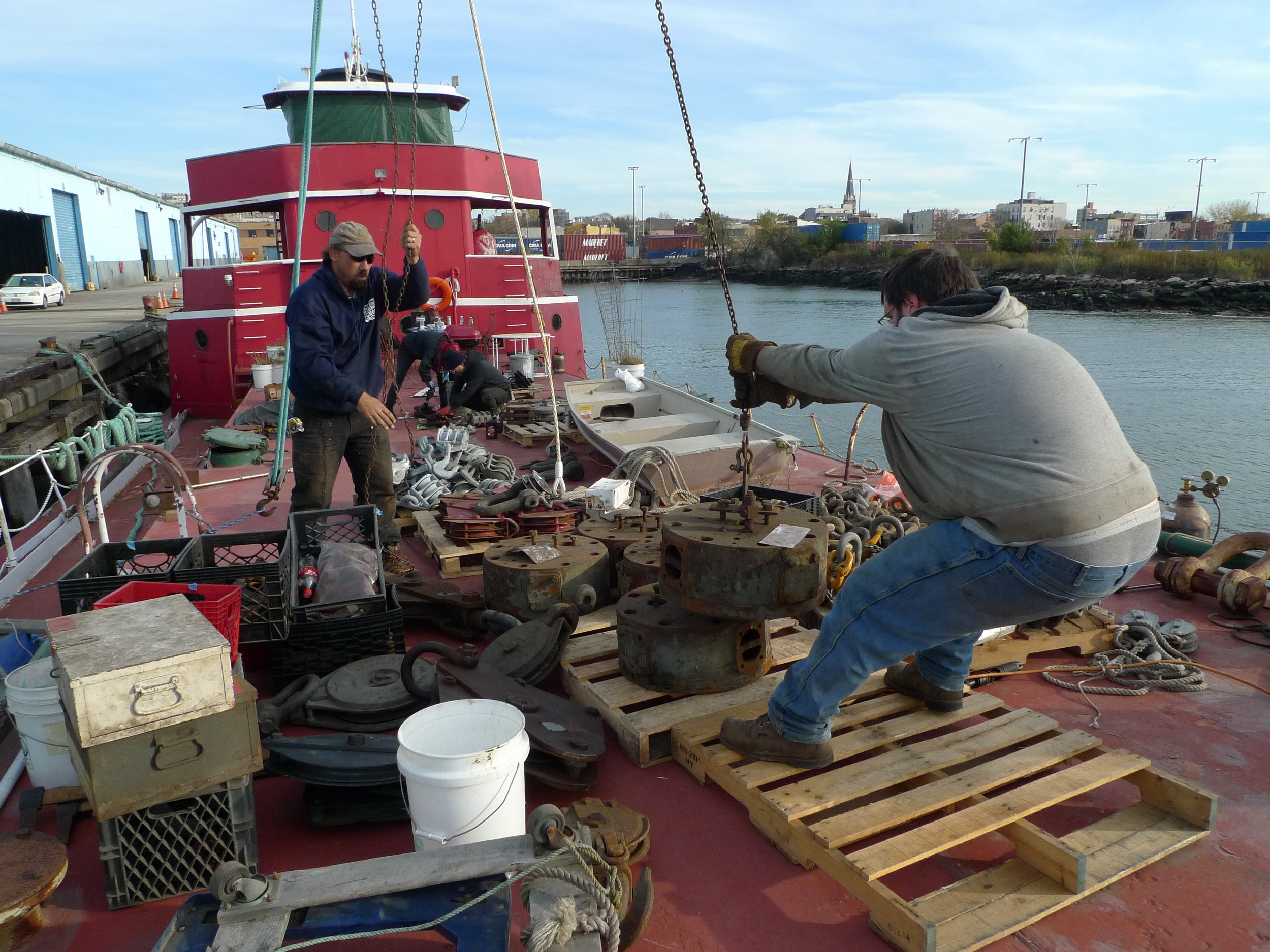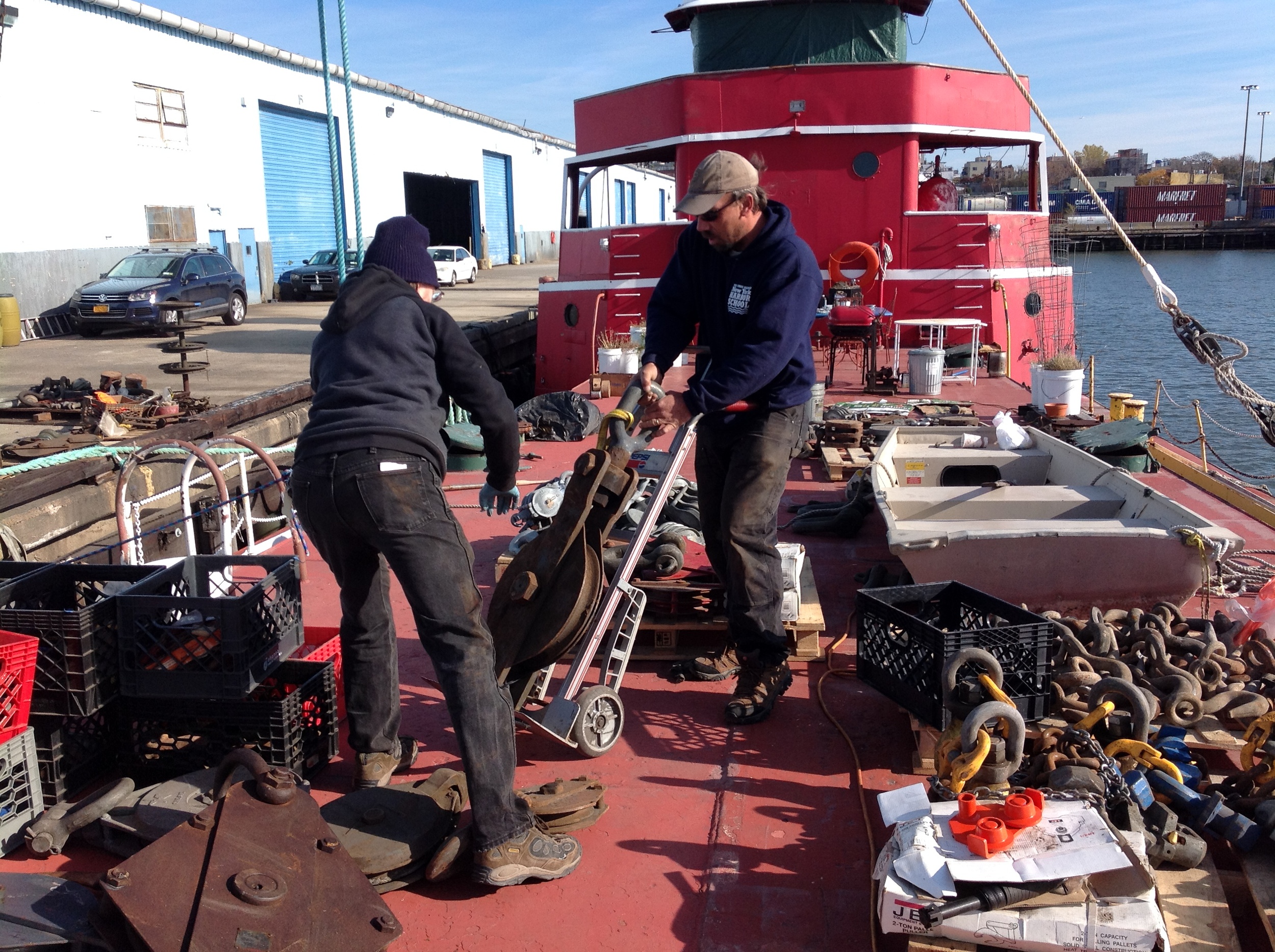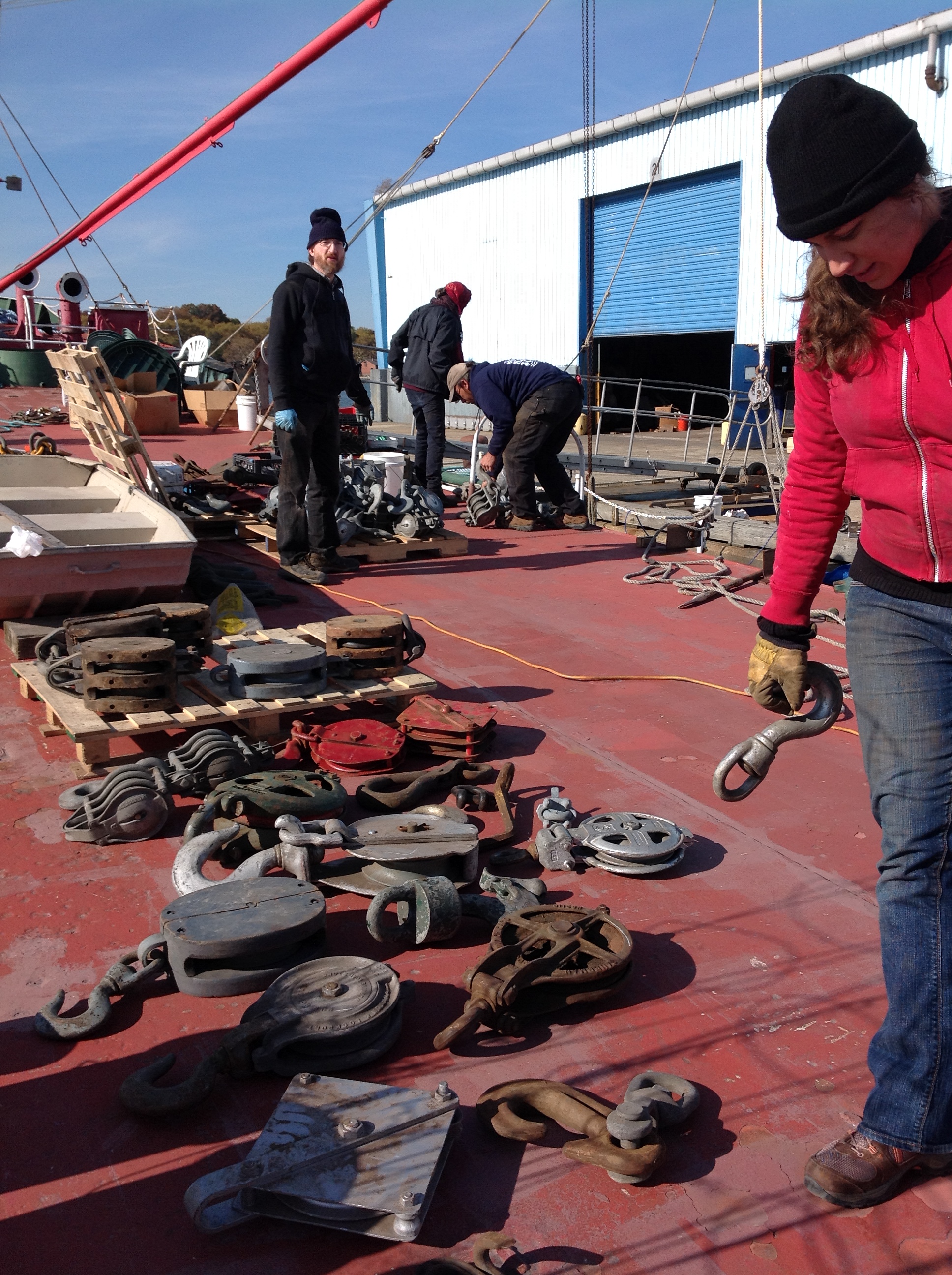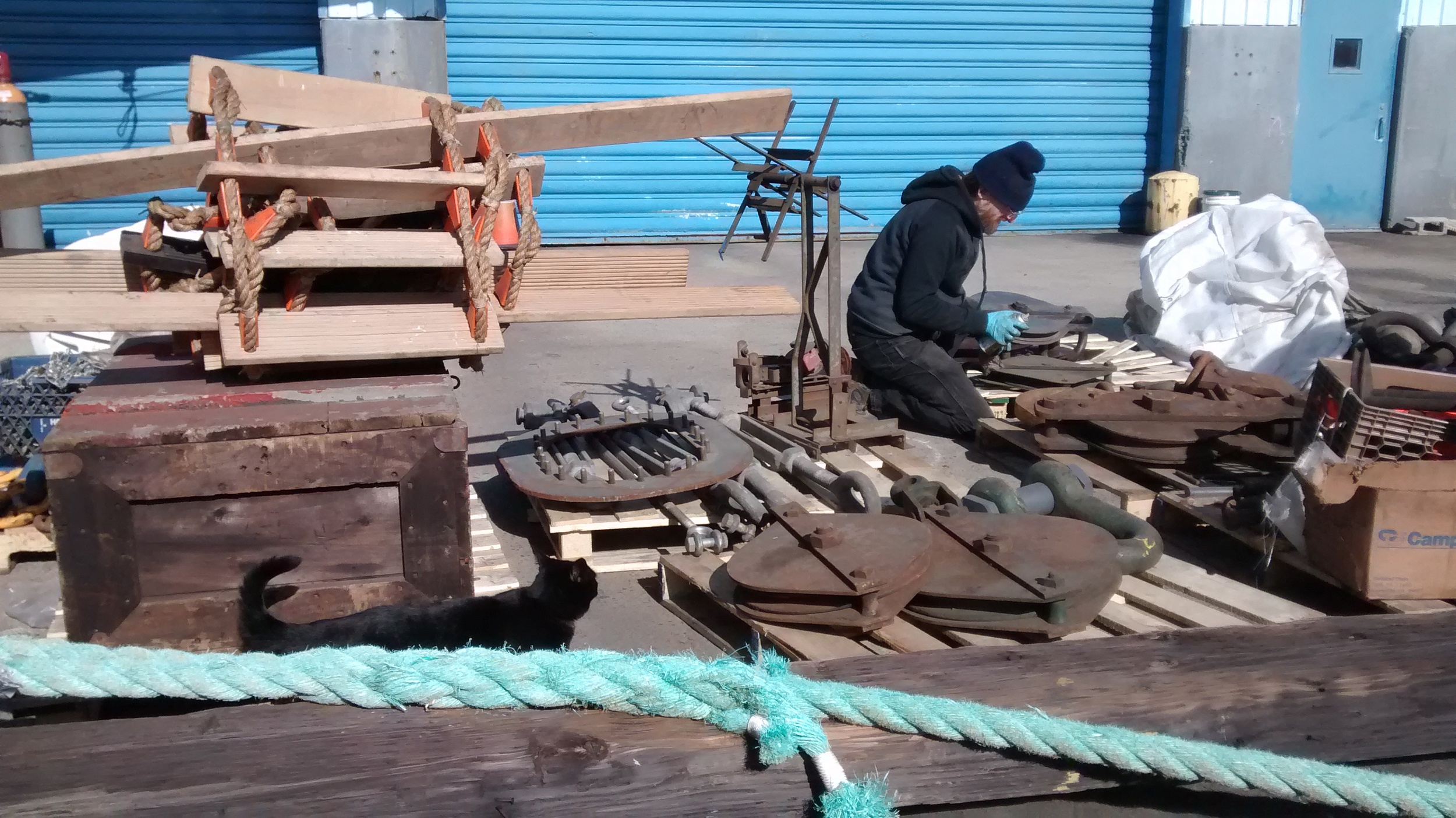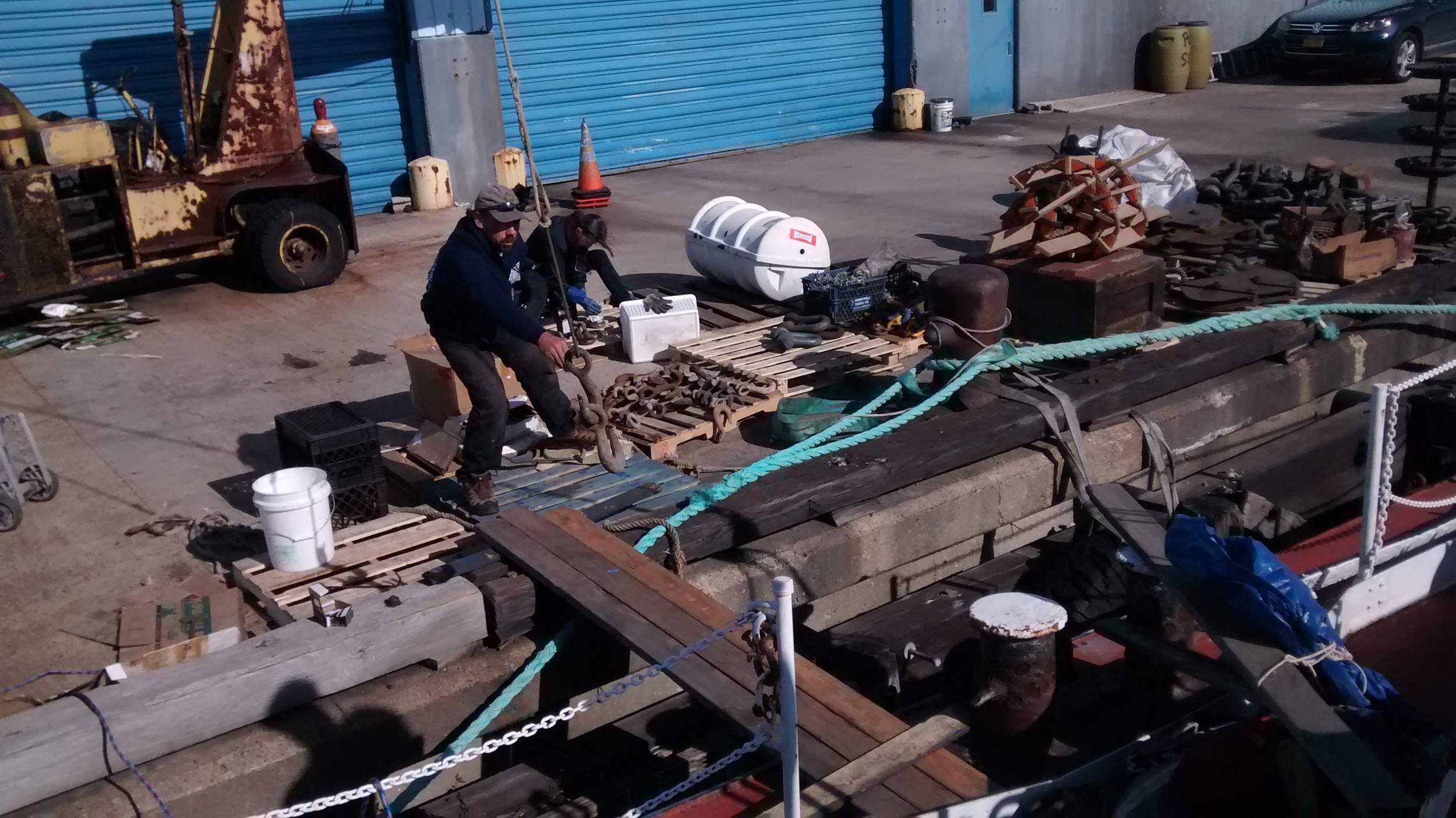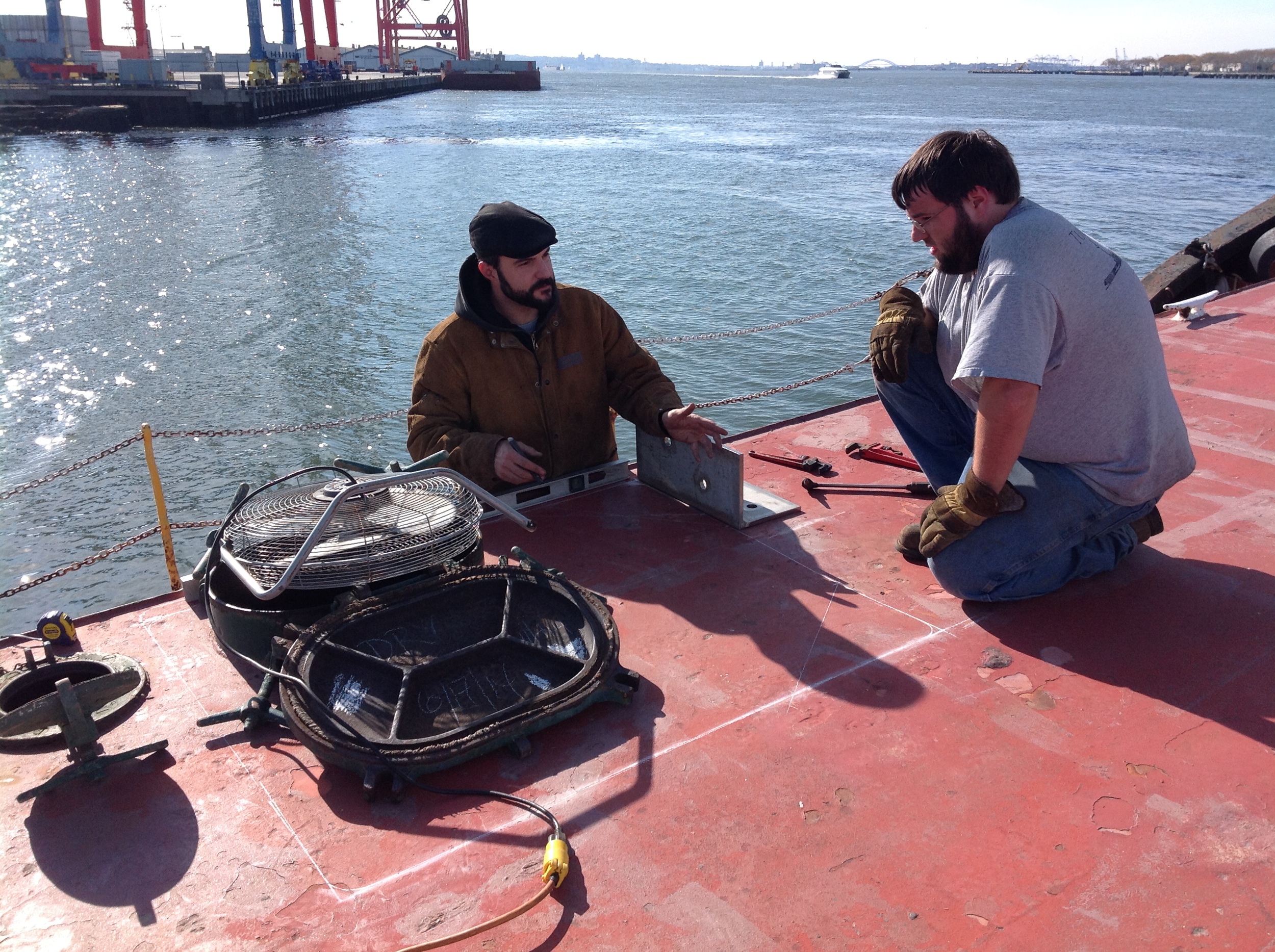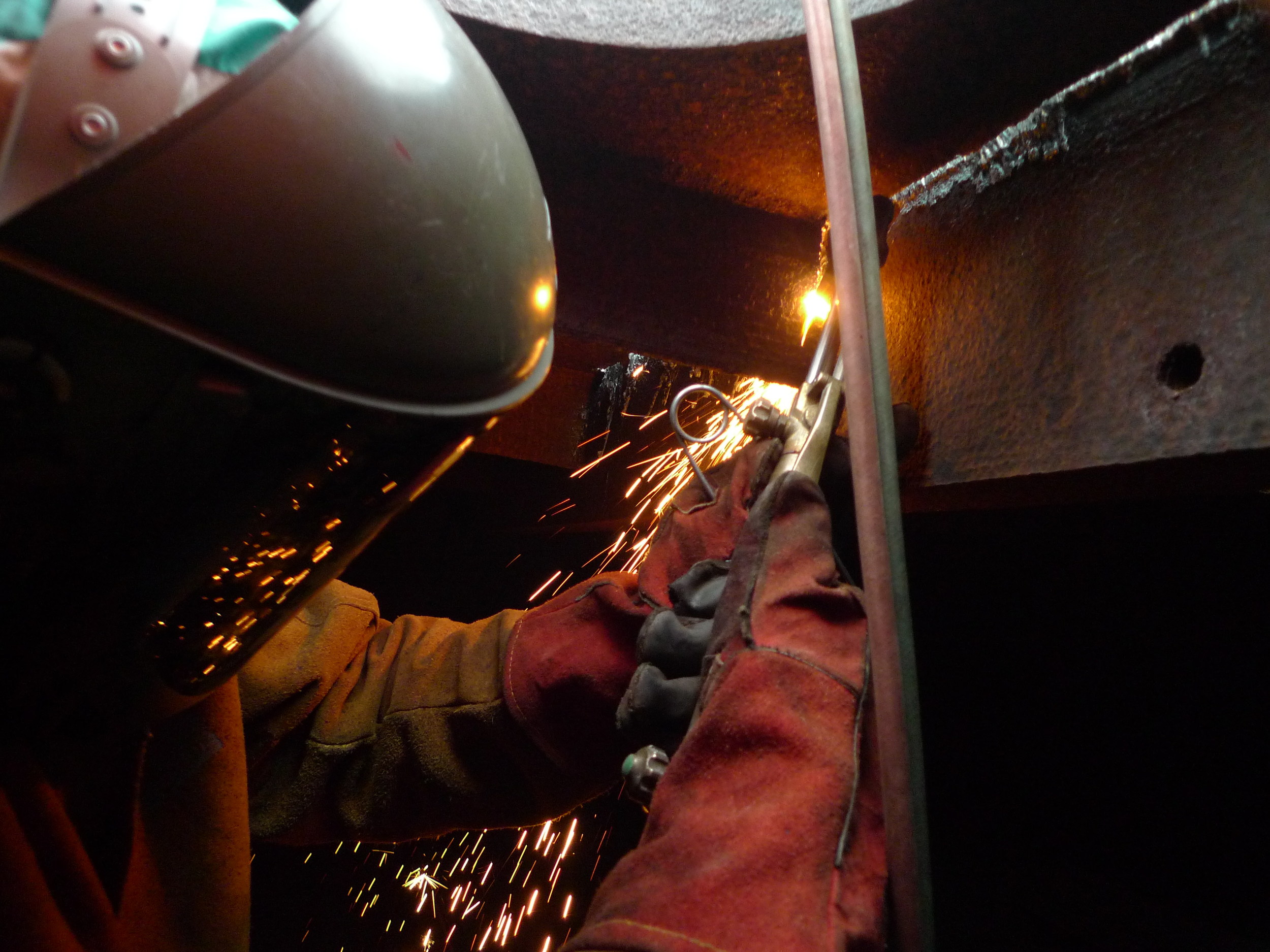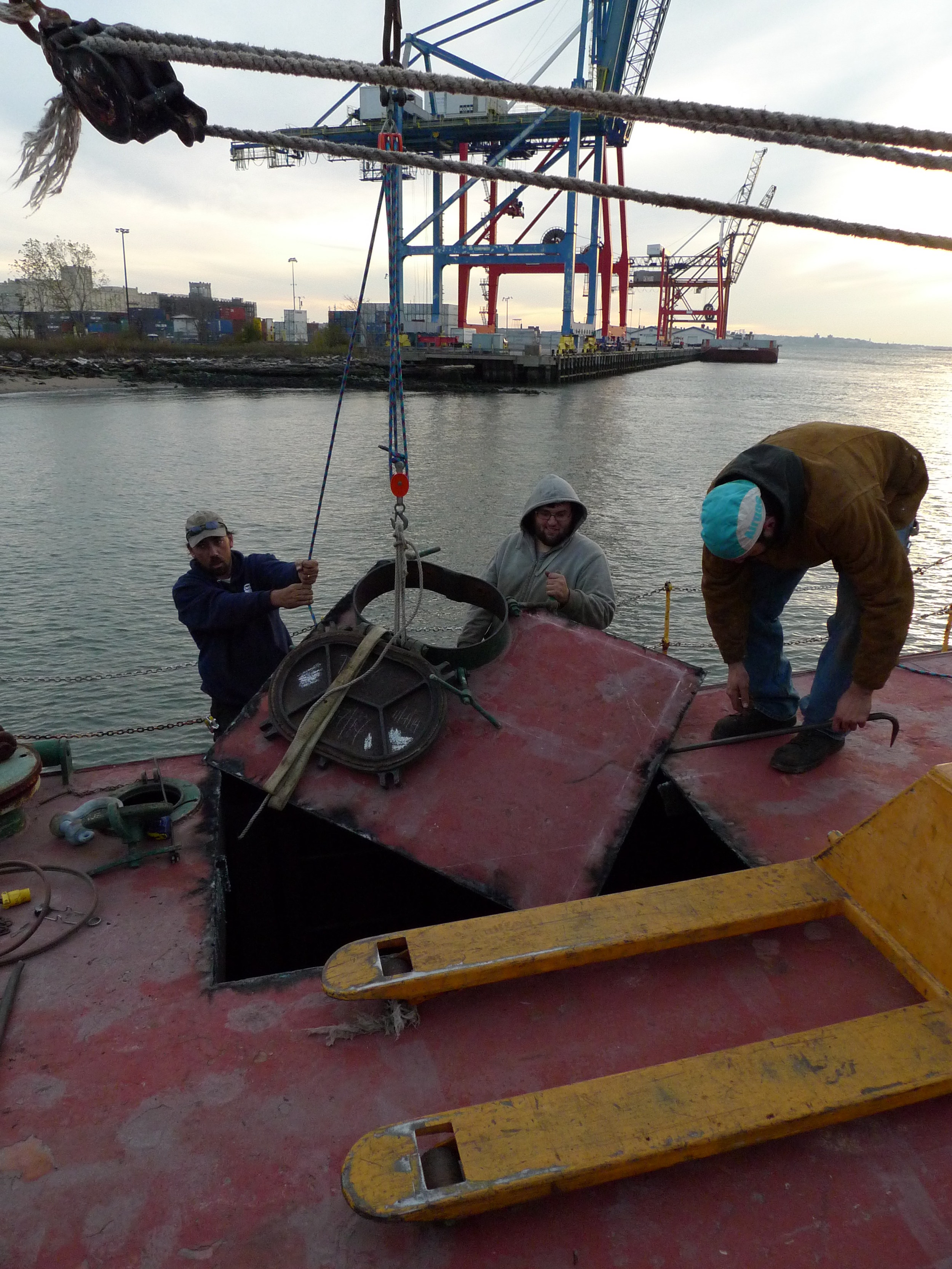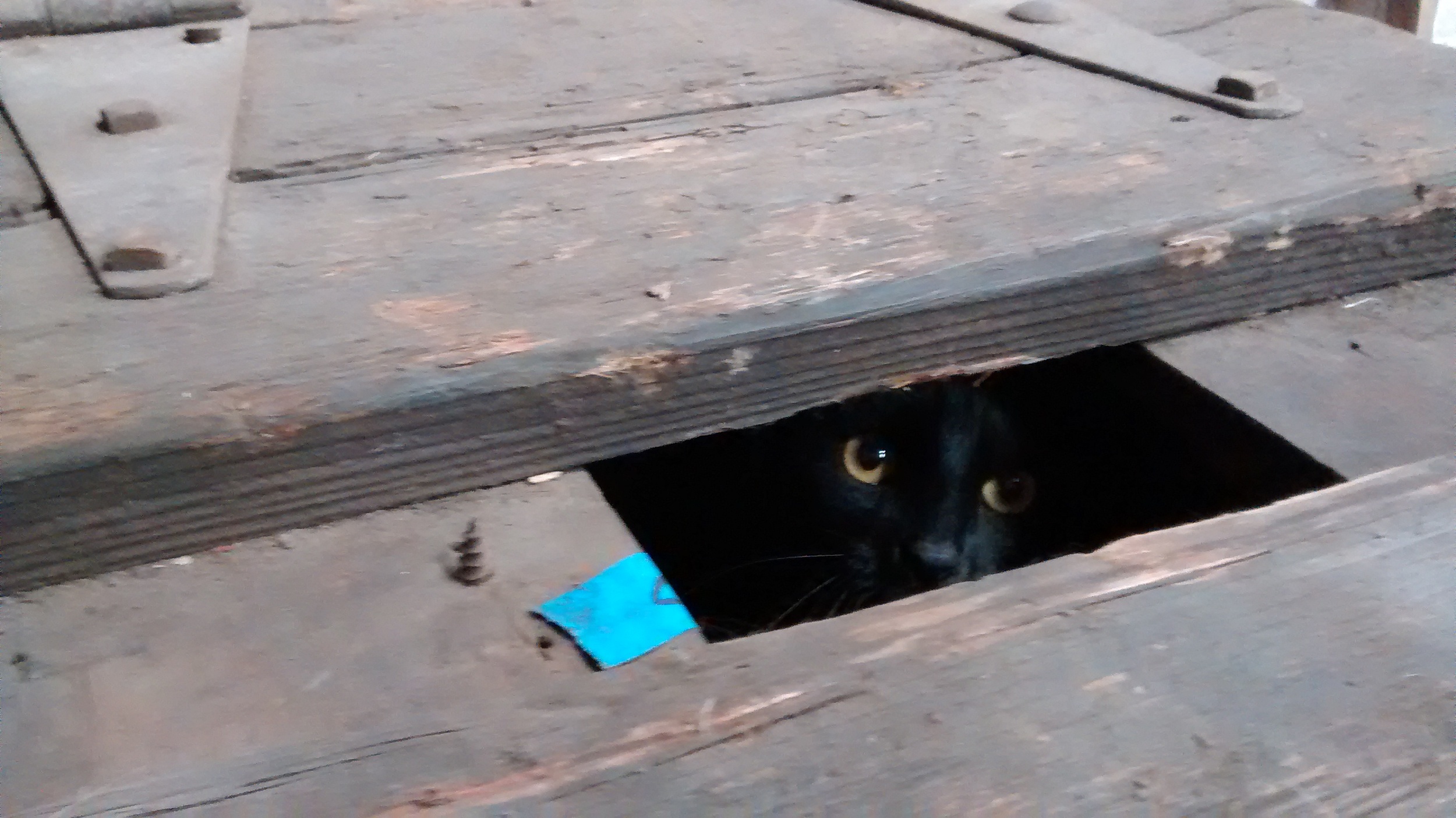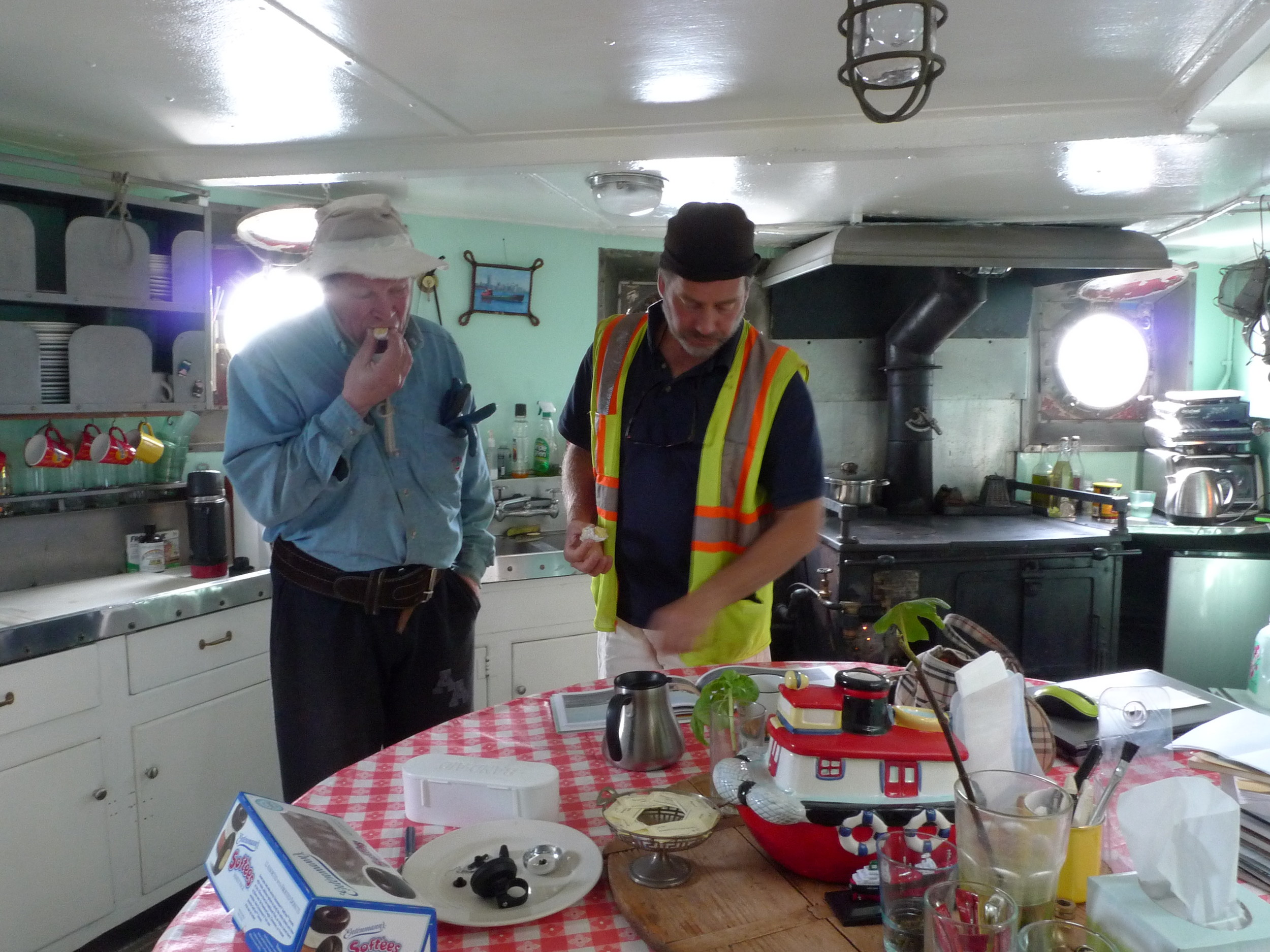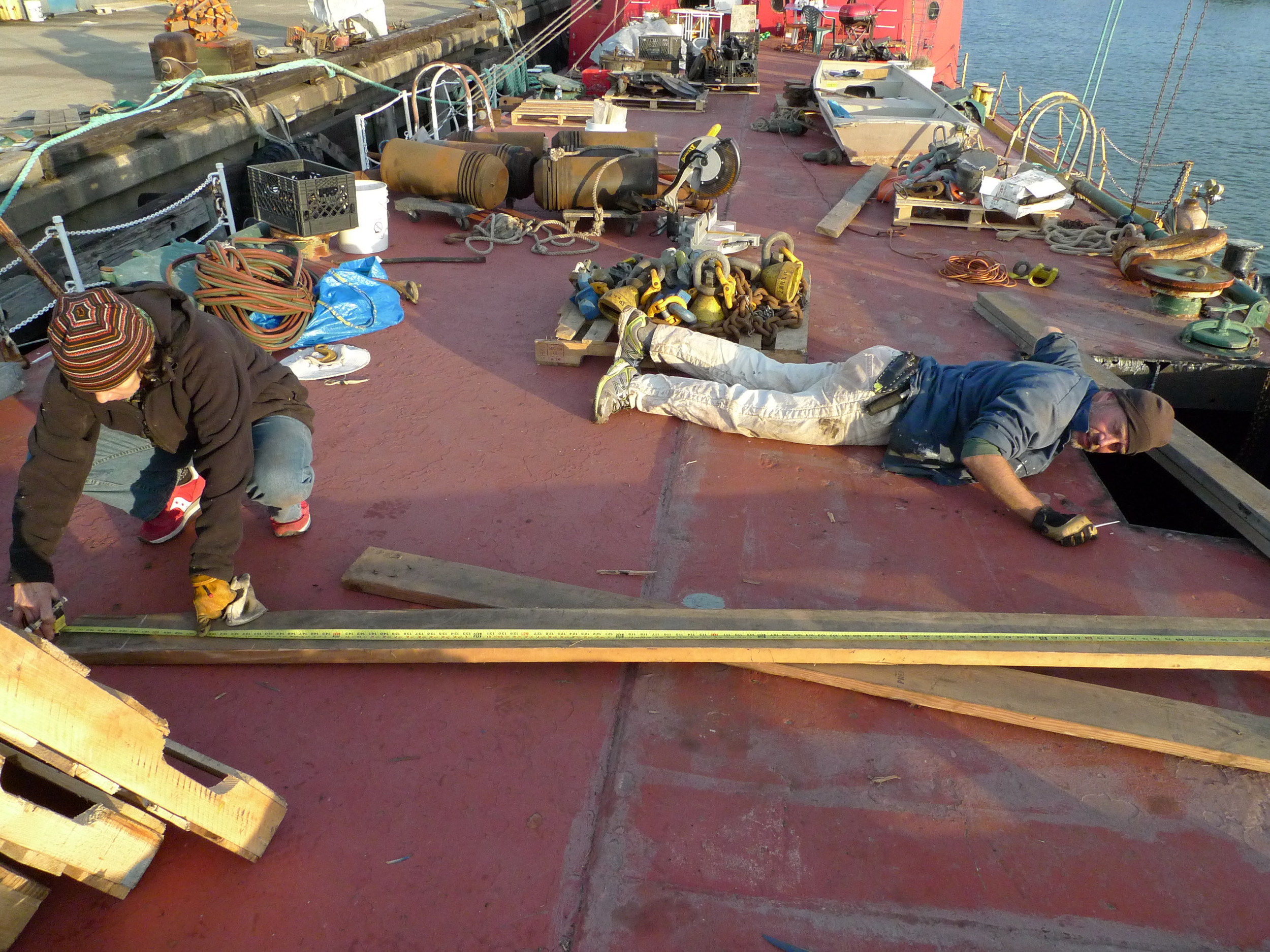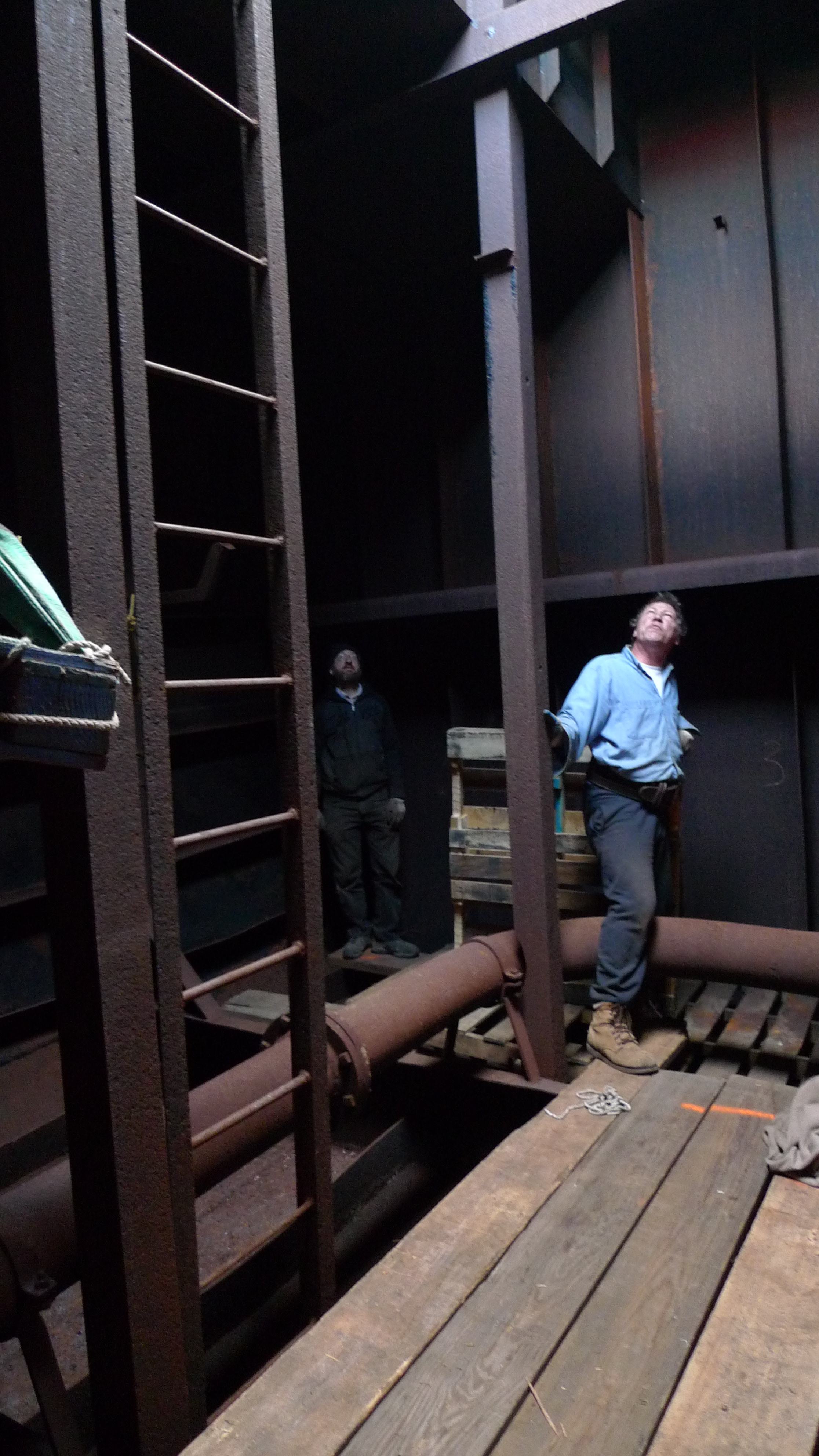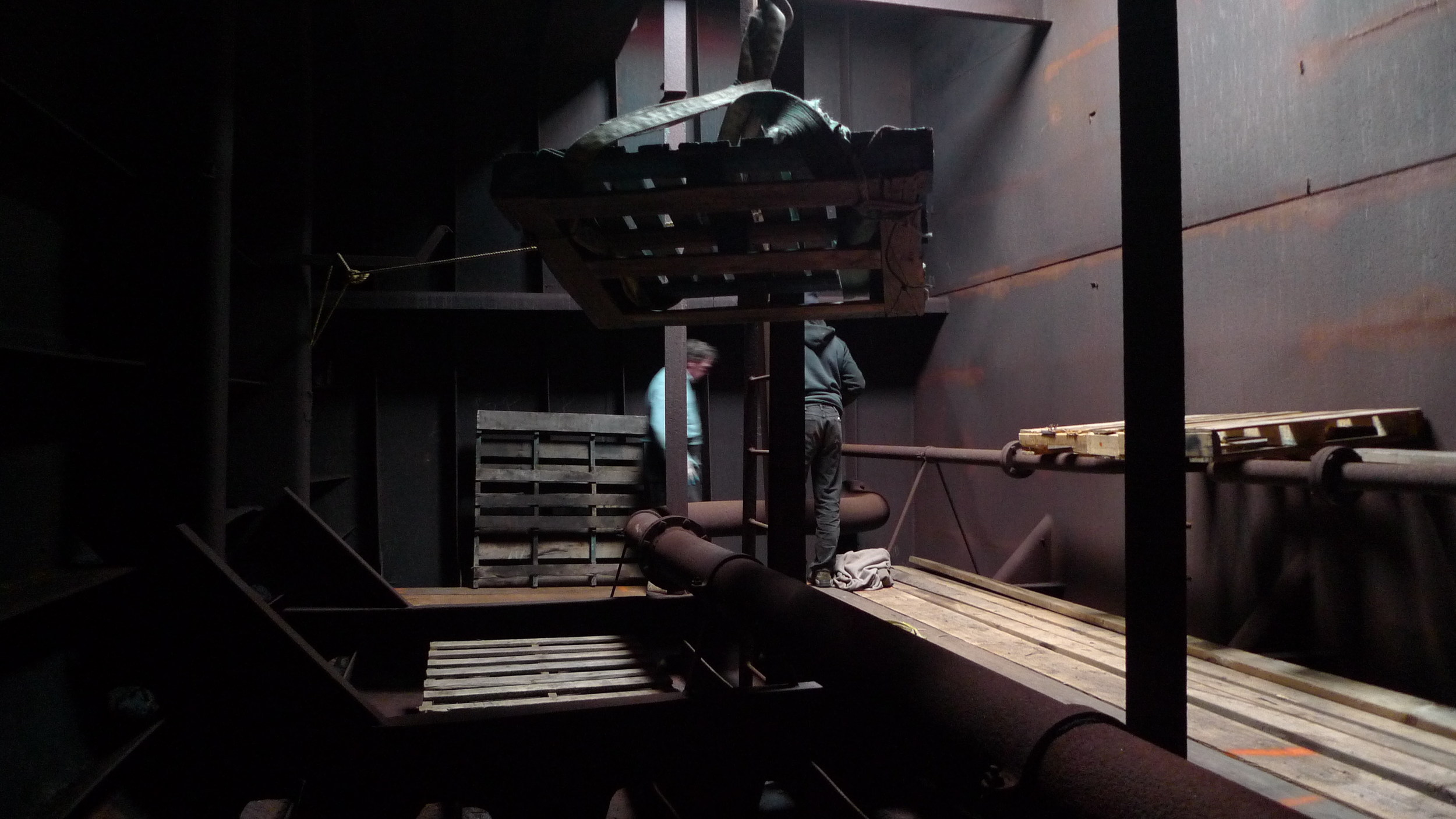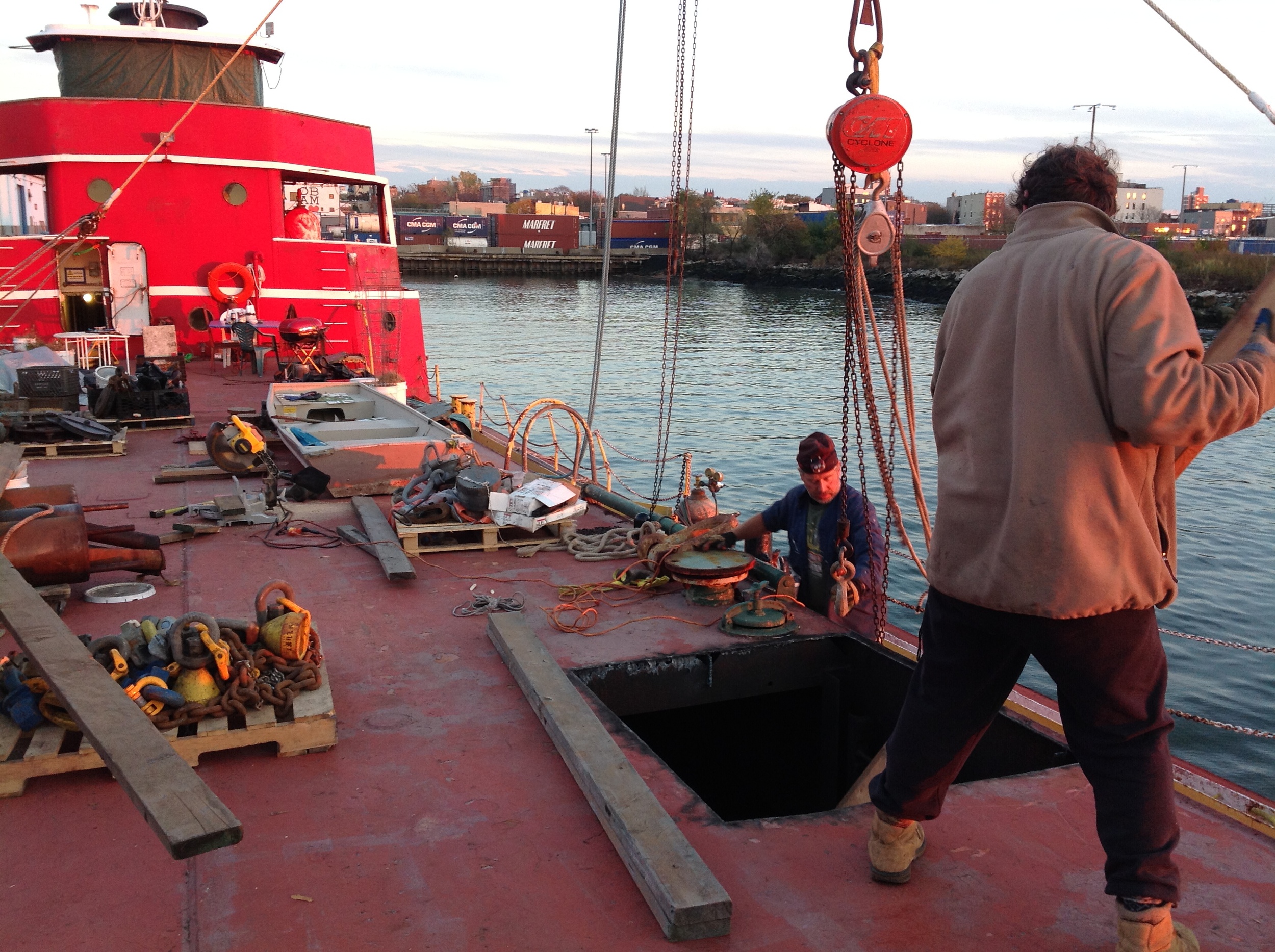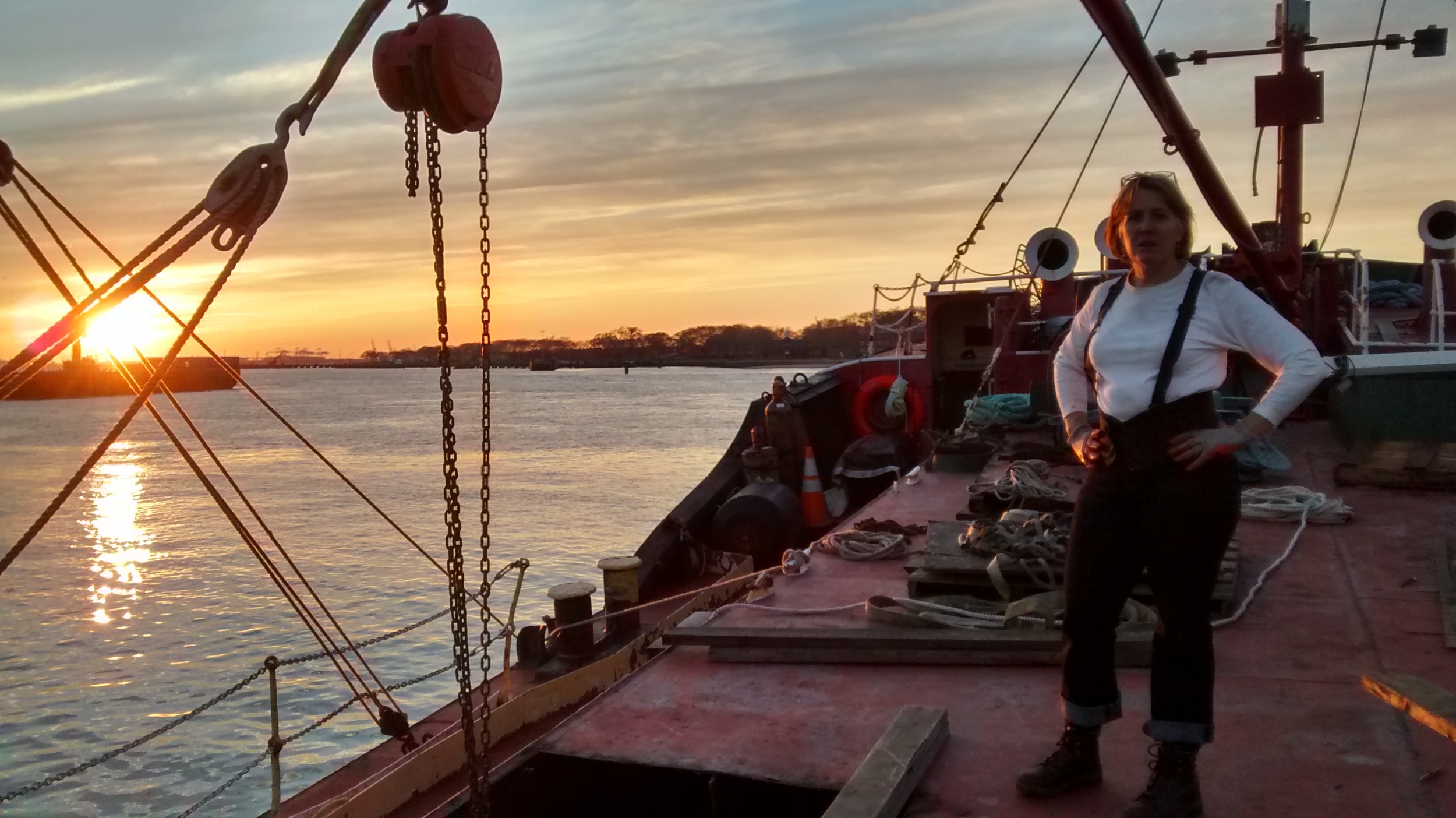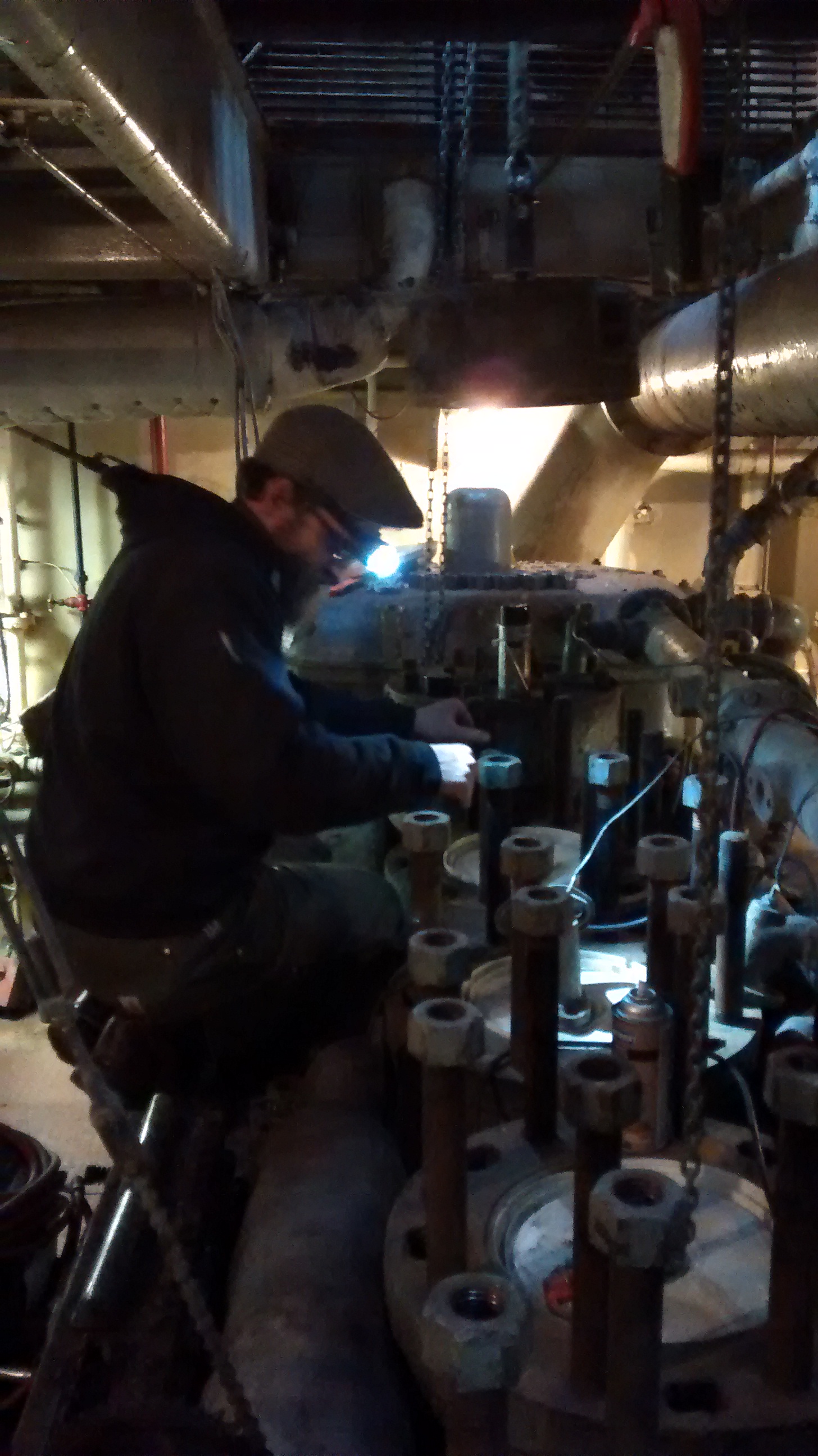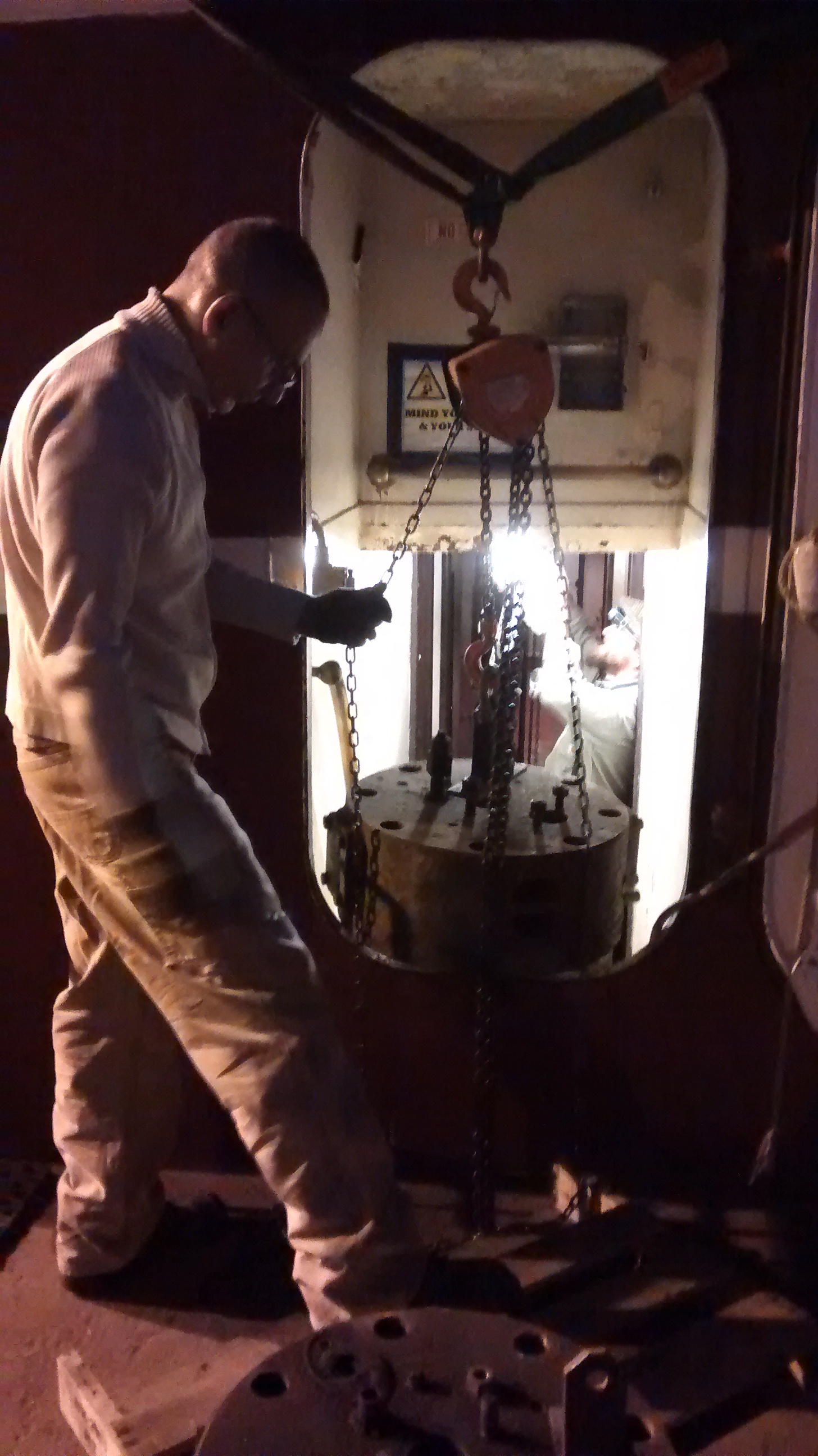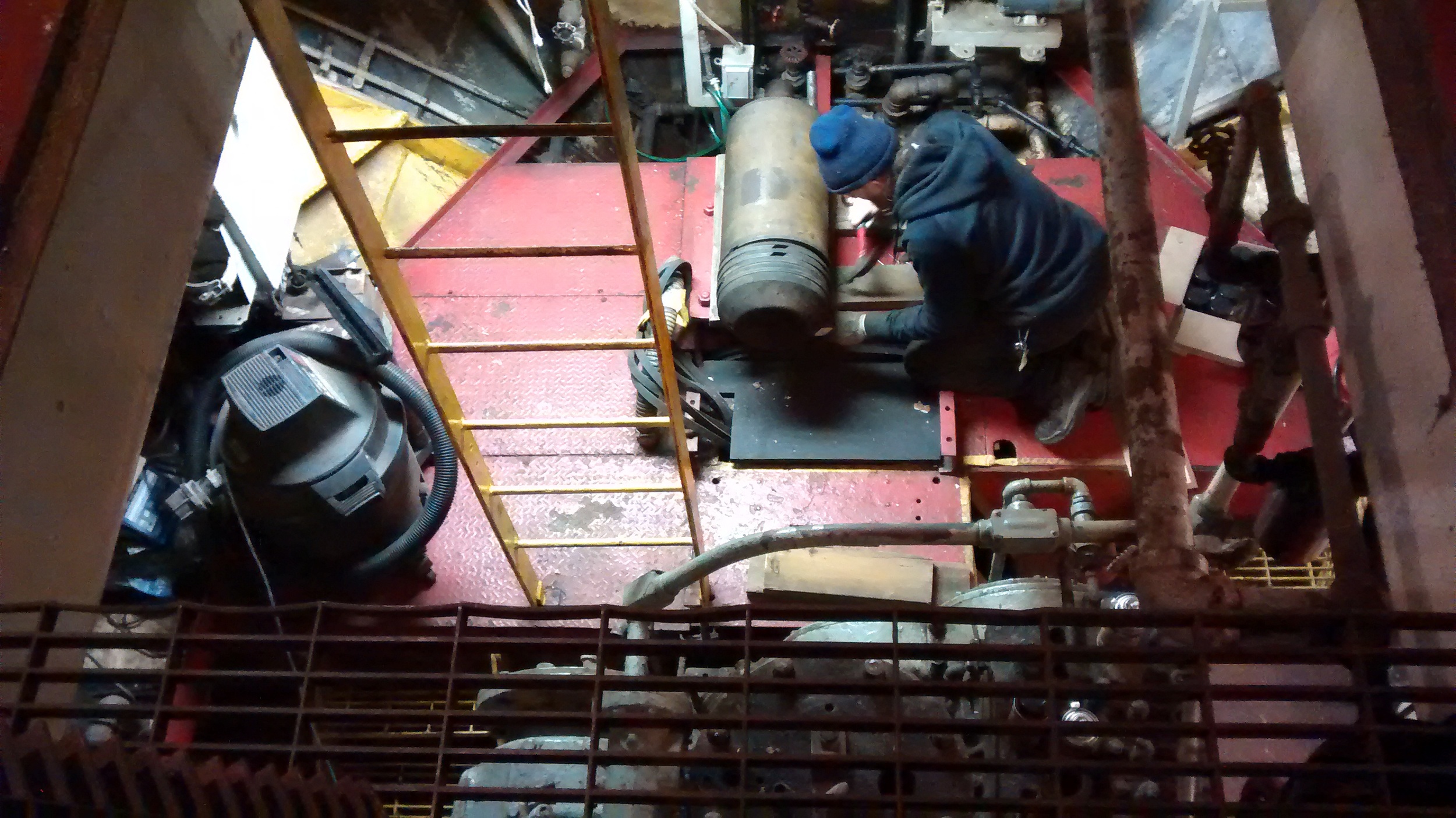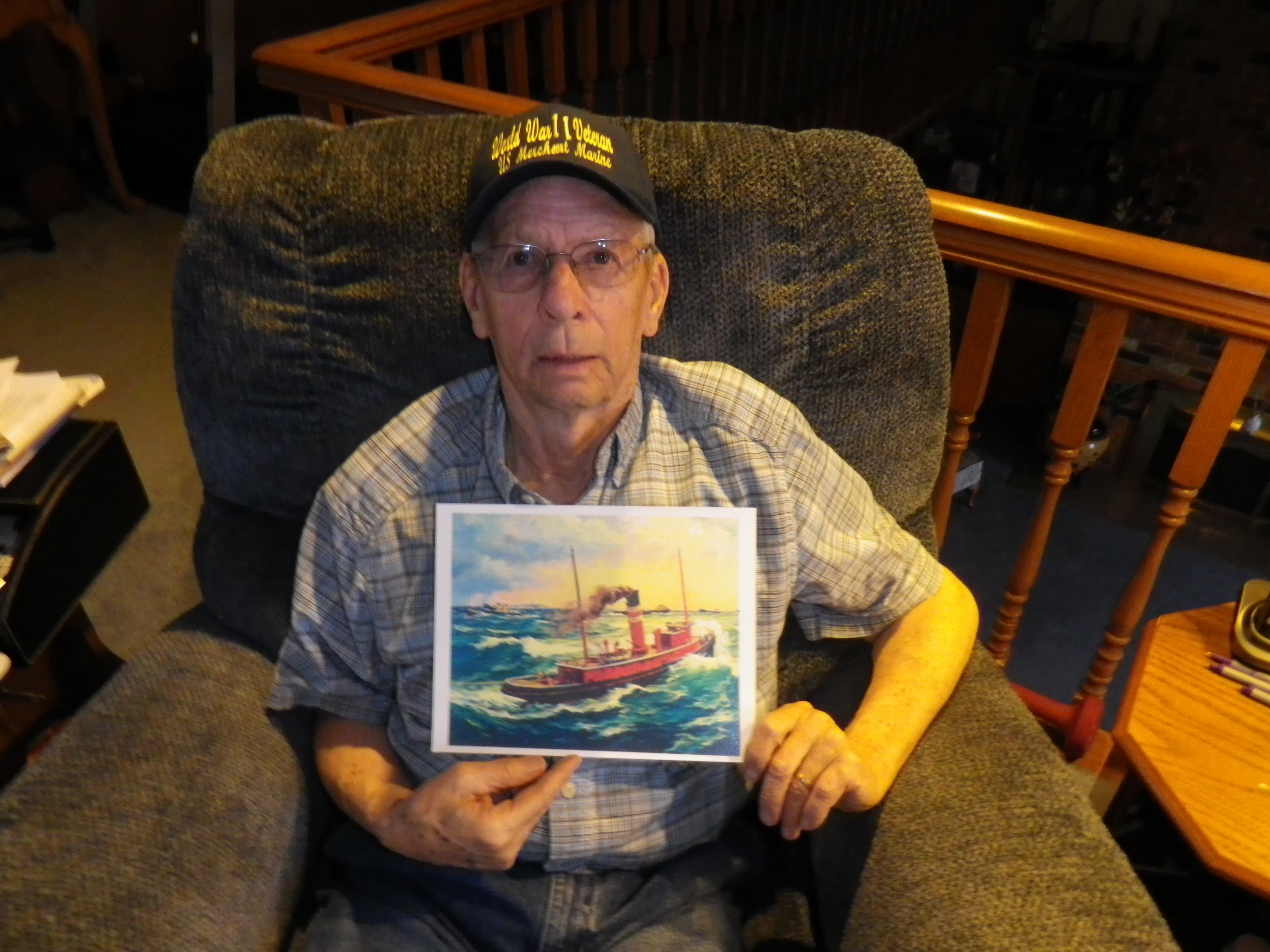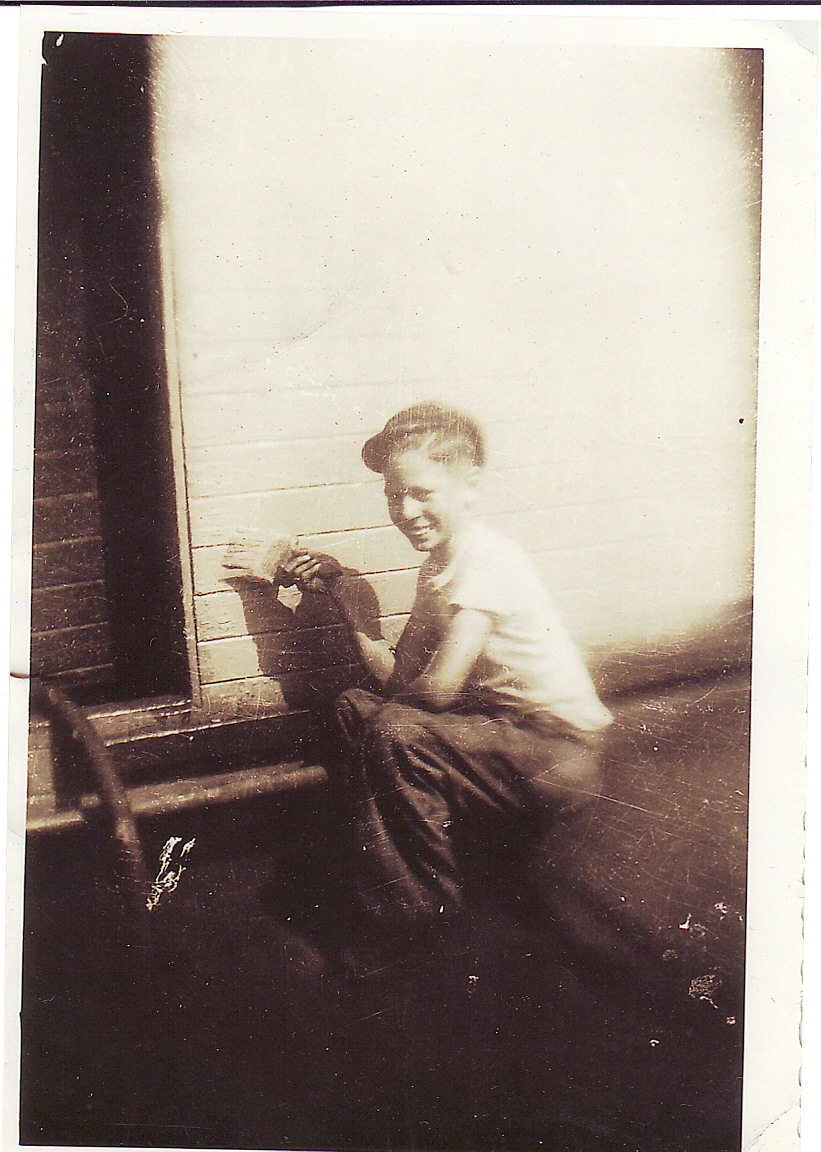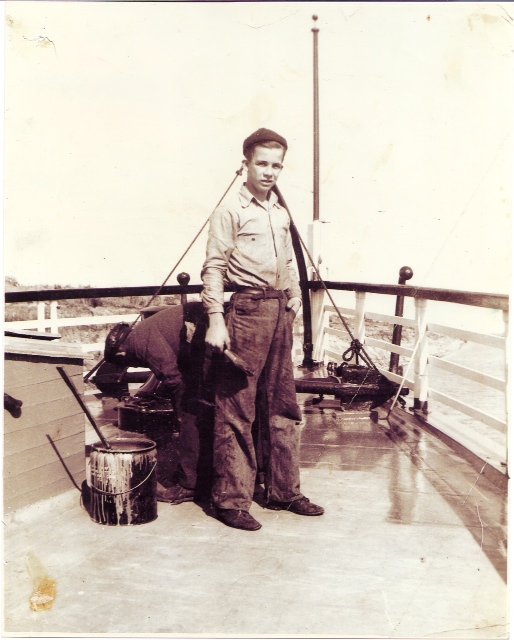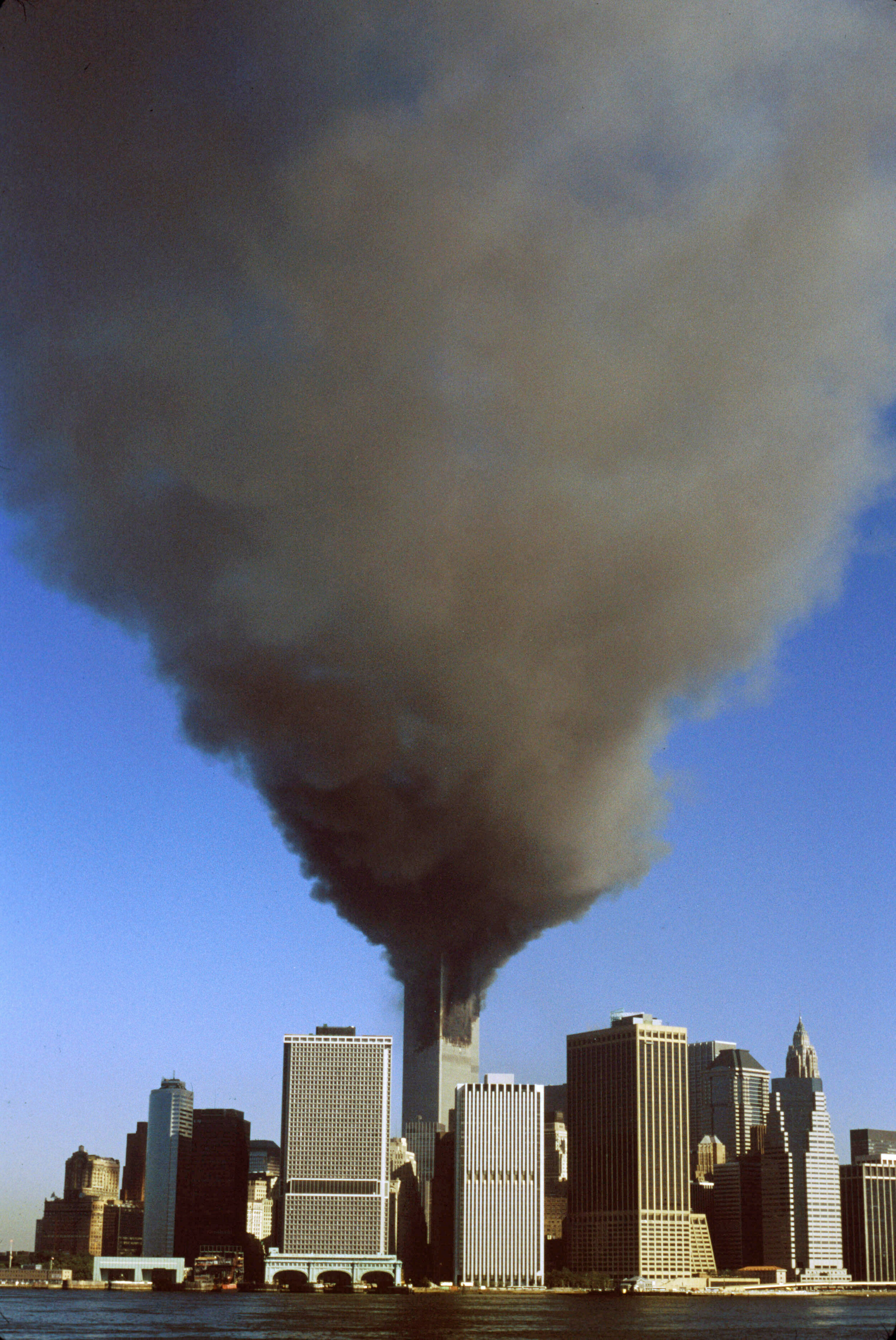Carolina began attending resiliency conferences. Summer 2013, she was asked to become a member of Red Hook’s NY Rising committee to create local resiliency plans. PortSide staff and interns did research supporting the committee (which includes bone, two, three, and four and several pages on our website) during the committee's eight months of work.
One of Carolina’s NY Rising goals was to inject maritime issues into the discussion, hoping the State NY Rising process could influence a state agency, the Department of Environmental Conservation (DEC), so waterfront infrastructure in NYC can be more repaired and built for both resiliency and everyday operations. Carolina also proposed the solar-powered emergency lights for NYCHA housing which are in Red Hook’s plan and are being considered for other NYCHA developments. “I think the NY Rising committee work is good. Red Hook distinguished itself for what we put in our plan,” says Carolina; but plans are hidden assets for most people until they are built.
Looking back on PortSide’s two years of Sandy-related work, for the sake of Red Hook’s planning better for the future, we would like to talk about some hidden Sandy stories of need and success we found in the course of our recovery and resiliency work.
Hidden Sandy stories of need and success
PortSide’s recovery work helped many people who don’t get media coverage and whose cases deserve more attention: People without an advocacy group, without on-line fundraising. People who aren’t comfortable using computers and needed Peter’s help to complete digital forms. People in mixed-use buildings that don’t fit FEMA homeowner funding guidelines. Renters who are not in NYCHA, and so are not in the media and political spotlights. Seniors, immigrants. People whose divorce, estate and tax situations complicated filing for aid and kept them from speaking up in public meetings. People who are private about their needs in general.
We learned that some affordable flood prevention was possible: The owners of Metal & Thread used a few hundred dollars of hardware store supplies to keep water from coming into their storefront and through the sidewalk hatch -- though their cellar suffered water leaking through the foundation from the empty lot next door. Some tugboat crews saved their cars by moving them from Erie Basin to the second floor garage at Home Depot, above surge level.
IKEA’s contribution needs more attention. IKEA gave and gave and got no media coverage until the Sandy’s one year anniversary when their $250,000 investment in solar powering the Rec Center netted some articles.
The power of connecting the community ashore and community afloat
Inland Red Hook is so disconnected from maritime Red Hook that the latter’s role in recovery is not discussed. For example, Jim Tampakis’ business Marine Spares was significant in pumping out the Brooklyn Battery/Hugh L. Carey tunnel. Vane Brothers provided hoses to the Hess fuel terminal at the foot of Court Street so home heating oil could be delivered. Both firms did that despite flood damage to their offices and mechanical shops.
PortSide feels the gap between inland resident and mariner is acute when we heard residents say “They told us to evacuate for Irene but nothing happened” and “I didn’t know there were two high tides a day.” We conclude that people ashore poorly understand marine weather reports and don’t know where to get them.
In comparison, mariners understand how to live with water, and how to prepare for hurricanes. They do the post-flood work of pumping tunnels, building ferry terminals and running emergency ferries, fixing bulkheads, clearing the harbor of debris so ships can import products as diverse as fuel, orange juice, new cars, bananas.
To bring maritime voices to people ashore, PortSide plans programs to help folks develop coastal living and flood prep skills, such as educational events with actual mariners, exhibits, and creating a children’s book with our shipcat Chiclet as a resiliency narrator talking about riding out Sandy on the tanker.
Andrea Sansom, who founded the Red Hook flood mitigation Google group, sees the need, “We all love living at the water, and PortSide is here to help bring understanding to living with the water.”
Our ship is a great tool for this. Our tanker MARY A. WHALEN is now a maritime symbol of resiliency, in contrast to the tanker JOHN B. CADDELL, Staten Island’s symbol of Sandy, which went aground and had to be scrapped.
PortSide’s own Sandy damages


